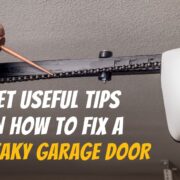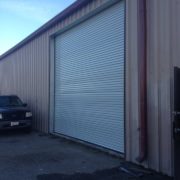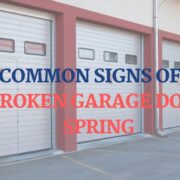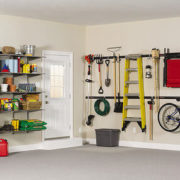5 Easy Ways To Prevent Floodwater From Running Under Your Garage Door
Flooding, as one of the most common natural disasters in the U.S., can be a nightmare not only for you but also for your property. It can result in serious damage and costly repairs. One of the areas of your home that can have the hardest-hit is often your garage. With its direct exposure to the exterior of your home, your garage is often the first area floodwater seeps through your home. However, the garage is mostly used for storing personal belongings and other important valuables. Thus, it is important to take ways to protect your garage from getting flooded.
Most types of garages are not designed to be fully watertight. And, because of their proximity to the exterior of a home, water can easily creep, seep and run into your garage. Ignoring the problem does not only lead to damage to items stored in the garage, but it can also cause wear to the garage door itself. Thus, it is necessary to find a solution to prevent water from running under your garage door.
How To Prevent Rainwater From Running Under Your Garage Door
Fortunately, several solutions can go a long way in protecting your garage from rainwater. Depending on the location of your garage concerning the driveway as well as other kinds of problems included, there are simple steps you can take to solve the problem.
1. Replace The Door and Floor Seals
On the lower part of your garage door, there is a flexible seal that extends from one side of the door to another. This seal helps ensure that the door is tightly pressed to the floor when it is closed; keeping snow, rain, sleet, and other weather away from your garage.
However, over time, these seals become deteriorated. The tape stripping starts to pull off from the door. The rubber begins to crack and brittle. When the seals are damaged they are no longer functional because water, pests, and insects can seep under the garage door.
Luckily, replacing the door and floor seals is an inexpensive repair. If you notice water seepage in your garage, check the seals first. Replacing the seals should be done every year.
2. Guttering
Aside from installing gutters around the perimeter of your home, it is also important to have one installed up around your garage door.
Gutters allow rainwater to direct away from your home. Thus, adding gutters to your garage is necessary to keep rainwater, that comes from the roof, from seeping under the garage door.
Consider installing gutters along each edge of the garage roof. Make sure that there are attached downspouts that will carry the rainwater away from your garage. Also, you can add some extensions that will help direct water away from the foundation of your garage.
3. Landscape Your Yard
The landscape around your house plays an important role in the flow of the water. If the soil near the driveway is above the level of the driveway itself, the water will accumulate around your garage instead of draining away from it. When this happens, the water tends to seep inside the garage.
If this is the cause of the problem, change the landscape of your yard, making rainwater to direct naturally away from your home. Though rearranging the landscape of your home requires a lot of effort, it is relatively cheap and straightforward.
4. Install A Trench Drain
If you have a yard that slopes down to your garage and not away from it, then you are forced to deal with a serious problem. This will lead the rainwater to pool around your home and eventually seep inside your property. The best way to deal with this is to install a trench drain along your driveway or in front of your garage door. A trench drain channels water elsewhere and helps ensure that you won’t have flooding issues inside your garage.
This is a complex solution but using a trench drain is effective for keeping rainwater away from your garage. But, keep in mind that when installing a trench drain, it should not direct runoff towards your neighbor’s yard, a sidewalk or to dirt slow without vegetation protection.
5. Use Sandbags
Another defense in the event of low-level flooding is to create a barrier using a sandbag. Though a sandbag may not fully seal the area, it can help redirect floodwater away from your property and/or keep you from dealing with serious water damage.
Line the sandbags in your property creating a sturdy pyramid-shaped barrier. Remember not to set the sandbags around your home or in front of your garage as it can cause a water trap between buildings and lead to additional damage.
For Garage Door Weather Protection Services, Trust Inland Overhead Door Company
The above steps can help prevent water from running into your garage. But, if you are concerned your garage door cannot withstand severe weather conditions, Inland Overhead Door Compay is here to help you. We offer free garage door inspections to ensure that your garage is safe from flooding. We will also inspect your garage for any signs of damage and recommend necessary repairs.
If your garage door needs replacement, we have a broad selection of garage doors. This includes hurricane-proof garage doors that can protect your belongings and your garage from destructive elements. Schedule an appointment with us today to have your garage door and garage inspected.











